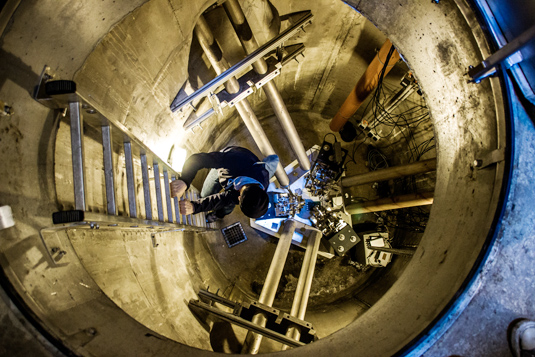The Noise is Back. The Impact of the Lockdown on Seismology
Heiner Igel, 03 December 2020
Earthquakes cannot be predicted. In that sense they have something in common with science in general. We never really see where things are going, and that is part of the attraction. My point is: I think the lockdown has made our scientific life slightly more predictable. How much have you been surprised by the odd zoom conference or the interactions at yet another international meeting that happened online? It is the randomness that is missing: meeting and interacting with scientists without a plan, whether it is at a conference poster or after a talk, at a reception, or meeting the prof from another research area or the brilliant student at a weekly happy hour during the visit to another university. It is the spontaneous “Hey, I have a crazy idea ...”, “Why don’t we … “, “I have never thought about this …”, that has suffered from our reduced traveling and social interactions with other scientists. In other words, part of the frenzy is gone!
Am I missing the travelling? Most of us would agree that the reduced traveling in the past few months was a blessing. So much time gained by not going from A to B! However, our study object is the Earth and field experiments are a fundamental part of our scientific work. My plan for this summer was to spend two months at the University of Southern California in La Jolla, partly to teach, and to carry out experiments at one of the seismically very active faults in the area of Palm Springs. Obviously such activities take years to prepare (and also are highlights). Flights and accommodations were already booked. Soon it became clear that the trip has to be cancelled (and not all reservations have been reimbursed yet). Activities like these will remain hard to realize in the current uncertain situation and must be put on ice.

Does missing out on this experiment ruin my research for the next years? Of course, it doesn’t. There are many options to compensate this, e.g., using the sensors for another experiment in our European backyard. Also – basically as a consequence of the cold war – world-wide seismic data are openly accessible since the early sixties (following the Nuclear Test Ban Treaty). Today we have thousands of stations on our planet. That means at any time we can download (for free), process, and analyze massive amounts of seismic data and do research with them. This fact has led to a seismological lockdown story that made front page news around the world: My colleague Thomas Lecoq from the Royal Observatory in Brussels, Belgium, reported on Twitter – shortly after the lockdown – that the sudden decrease of traffic, and other anthropogenic activities substantially reduce the so-called “background seismic noise”, i.e., the ground motions one observes whenever there are no earthquakes (so basically most of the time). Well, isn’t that obvious?
Yes, it is. It is not surprising for a start. During Christmas holidays (and actually every weekend for that matter) this decrease of ground motion noise can also be observed. But something else made the story explode. It is the fact that Thomas Lecoq provided with his Twitter message the link to the software with which he obtained the results for a seismometer located in Brussels. Because it is based on the recently so popular Jupyter notebooks combined with a Python library for seismology (that we started in Munich), every seismologist in the world could redo that exercise for his/her own seismic station within seconds. That’s how the story made it into Science. Within almost no time, the lockdown noise reduction could be compared for seismic stations in the Antarctica, downtown Manhattan, or the Schneefernerhaus on Germany’s Zugspitze. Now the pre-lockdown ground motion noise levels are back!

And it is precisely this Jupyter type of platform-independent, easily interchangeable, and executable electronic document that made teaching and scientific projects quite easy during lockdown. The MSc students of our international course in geophysics were mostly in their place of origin. Thus, our zoom classes involved students in China, Scotland, Norway, Portugal, Texas, Brazil and other places (still happening at our mid European times, and none of the students complained!). Because our teaching is very much on the theoretical, computational, and data analysis side (and not laboratory based), the courses – apart from the online situation – did not suffer much. In the long term – even though we might go back to normal teaching sometime in 2021 – I will move more and more towards preparing online interactive documents (like Jupyter combined with free online servers like mybinder) that students can continue to use whenever and wherever they like (similar to what is offered with online courses on the educational video platform COURSERA).
I presume that like in most scientific areas we will not go back to pre-Covid travelling patterns concerning EU or national project meetings, or even workshops. In many (not all) situations we realized how efficient and drastically cheaper online meetings are. More difficult are the large conferences with sometimes ten thousand participants that one usually loves and hates. The first attempts to keep such meetings alive electronically (like our annual European Geosciences Union Meeting in Vienna) were not working very well. I guess and hope we will see improved hybrid formats emerging with quite some overhead for the organizers.
In the coming month I accepted invited talks in Michigan, US and Lisbon, Portugal, happening within two days. Of course online! It would not be possible to do this by plane in that time frame. The organizers say that these talks will be followed by meetings with the grad students. I wonder whether drinks will be served!

